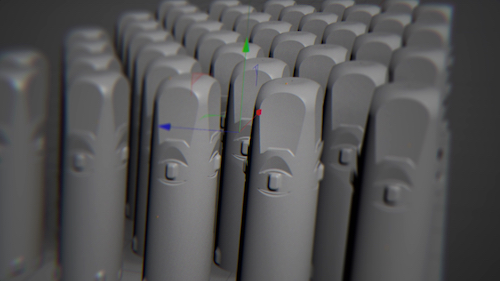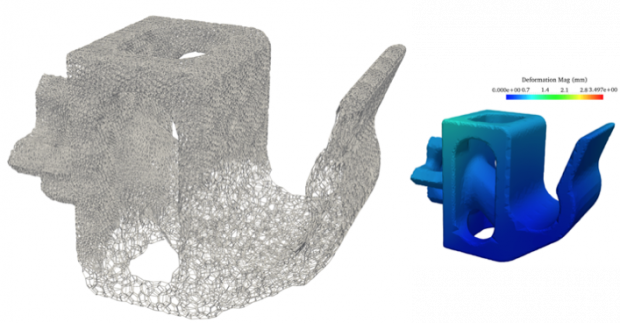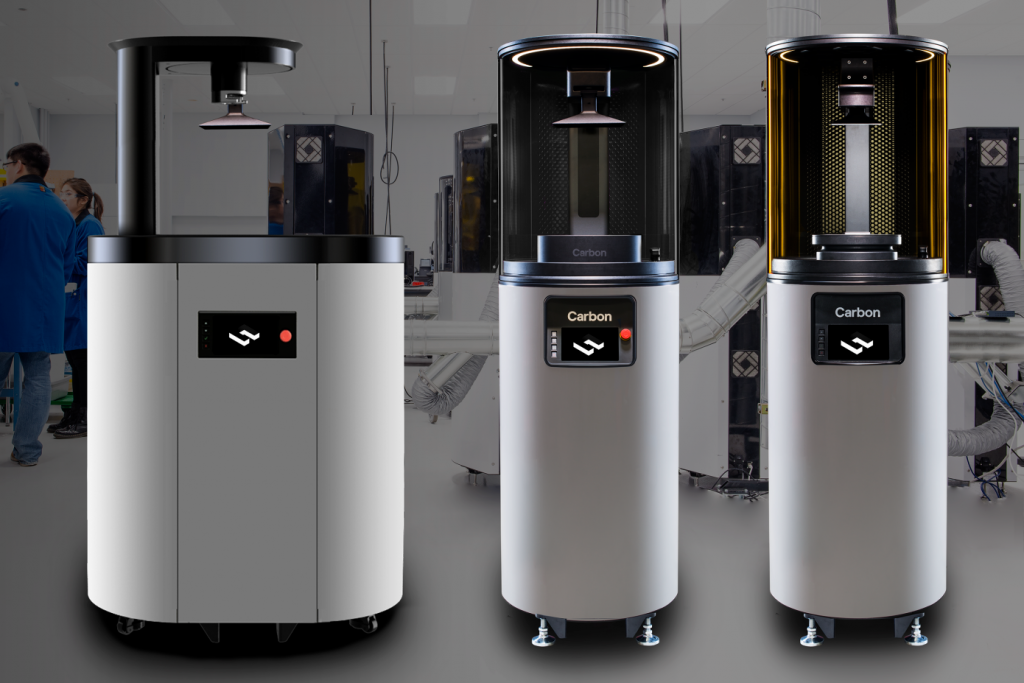A Conversation with Carbon Founder and CEO Joseph DeSimone

Carbon Founder and CEO Joseph DeSimone. Image courtesy of Carbon.
May 4, 2018
 Carbon Founder and CEO Joseph DeSimone. Image courtesy of Carbon.
Carbon Founder and CEO Joseph DeSimone. Image courtesy of Carbon.Digital Engineering sat down with Joseph De Simone, founder and CEO of Carbon. The company, which was founded in 2013, ended 2017 by announcing a $200 million round of investment funding. Carbon’s Digital Light Synthesis technology powers its SpeedCell system to rapidly produce products from a pool of resin.
The discussion below has been edited for clarity and brevity.
DE: A lot of products are more complex now and the timeline for getting them out the door is not getting any longer. How do you see Carbon technology helping to solve some of those workflow challenges for design engineers?
DeSimone: We are focused on everything related to design engineering, making and delivering physical polymeric products. We think a lot about the digital workflow. A lot of it has been the development of a scalable digital fabrication technique that actually meets the quality, material properties and economics needed for end-use applications. I don’t know if you got to see the Vitamix story ...
DE: We actually published a blog post on it the other day.
 Using Carbon additive manufacturing technology, Vitamix redesigned a multi-part nozzle into a single monolithic part. Image Courtesy of Vitamix/Carbon.
Using Carbon additive manufacturing technology, Vitamix redesigned a multi-part nozzle into a single monolithic part. Image Courtesy of Vitamix/Carbon.DeSimone: Great. We appreciate that. It is a digital technique. If you just think about that particular part where using injection molding ... Well, actually, take a step back. When you think about what’s happened with 2D printing where we went from the mimeograph machine and copies, and everyone had a viable digital technique, and laser printers just transformed how people collaborate and people work—it disrupted supply chains. In the polymeric products world, there’s not been a viable digital technique. We go to all the tooling. We’ve been wrapping digital fabrication around, really, analog manufacturing processes.
Now, having viable digital technique for fabrication where you can can consolidate many parts into one part as we did for Vitamix. Then you have some huge changes in how people work and design. When the “unmakable” isn’t, all those things happen.
Part of that process was using finite element analysis (FEA) and cloud-based tools to understand the mechanics of a part, that it will function in a specific environment. Not only can you go from six parts to one part, but for a lot of parts—because of bonding ultrasonically or mechanical screws—you have to have certain areas thicker than others to accommodate the bonding. The ability to dematerialize and lightweight the part was a huge advantage. We knocked out about a third of the mass on that [Vitamix] part. The economics that came without tooling, less mass and lack of assembly—you’re looking at a huge reduction in cost per part.
We’re really interested in exploring more about that workflow. It’s interesting that because digital fabrication techniques have been lacking, the design software tools have been lacking.
DE: Our April issue includes coverage of that very topic. The motivation wasn’t there in terms of economics.
DeSimone: It’s almost a chicken-and-egg problem.
So now we realize, for example, let’s start with lattices and the Adidas running shoe. A lot of designers and engineers don’t need to know unit cells, what geometry, what strut thickness, what strut length. That’s mathematics right there, it should be driven by that. We’re building—and it’s almost complete, we’ve been beta testing it internally with partners—the idea of being able to have a primitive CAD and the user specifies what mechanical properties they want in different regions of the geometry.
What we do is we are building and adding to a library of lattices. That library has different lattice designs—strut thicknesses, unit cells, materials—so a user can specify what mechanical properties they want in different regions. We can then put this together autonomously. We’ve done the mathematics to flow from one lattice to another lattice smoothly without defects. That in itself is not trivial. Then we go to a finite element analysis module. We’ve been able to recapitulate the pre- and post-buckling of lattices. So we can do an in silico or in cloud—in silico sounds so old, but that’s what it used to be—simulation and it completely recapitulates the mechanical properties.
That’s not the end of the story. Then it goes to a printability module where we’ve got the complete physics and printability of our Digital Light Synthesis that simulates heat, mass transfer, reaction kinetics, the stresses on building, the speed. We’ll give it a fabrication score, and depending on what that is we can send it back in and go through a loop and optimize the output. And then we print it. And we’ve been hitting it spot on from user-specified dimensions.
[Editor’s note: Learn more about Carbon’s software development efforts here and here.]
DE: That takes on another big topic that we cover: the democratization of simulation where there aren’t enough analysts to do the work that’s needed to be done so it’s being pushed to CAD experts who may not be familiar with simulation. So you’re saying they don’t really have to ...
 To fix a deformation problem, Carbon software can automatically generate the appropriate lattice based on the desired performance. Image courtesy of Carbon Inc.
To fix a deformation problem, Carbon software can automatically generate the appropriate lattice based on the desired performance. Image courtesy of Carbon Inc.DeSimone: They don’t need to know FEA. They just put in the specs they need. The primitive CAD, just the skin—what mechanical properties, what material, what the printing speed will be, what the materials cost will be, what the mass will be ...
DE: Are you doing that internally or working with an existing software vendors?
It is all done internally. We have amazing team members who are computational fluid mechanics, reaction kinetics and finite element analysis gurus. We had to actually build an FEA tool because our printing process is so complicated. Now we’re using it to help redesign parts. So that’s one big digital thing that we’re talking about at this meeting.
The other big digital thing we’re talking about is surface textures. Because we use light ... you know most people don’t think of 3D printed surface quality being that great, they think of lines. Because we use light, we have great surface texture and the ability of putting different textures superimposed for all types of aesthetics and surface finishes.
Those surface textures are hard to apply on curved surfaces with other processes without seeing defects. We realized people needed a tool. So we basically have a texture tool. You can think of it as an App Store for textures. You can basically click on a texture and click on a surface and automatically wrap that texture on that surface.
It turns out to be a really valuable tool. The textures go beyond aesthetics. Textures can become functional surfaces.
DE: That requires an out-of-the-box mindset toward design. You have engineers who have been designing products for years with maybe an injection molding or subtractive mindset. Are you doing anything as a company to help people realize the possibilities.
DeSimone: We have an advantage and disadvantage as a newcomer. We don’t know what’s not possible. So we do have an advantage ourselves, but man, we’re really inspired by our customers. This is a really powerful tool. We’re getting this powerful tool for democratization into the hands of large and small companies and designers.
That’s a big advantage of us going direct to marketplace. A lot of people work through channels and they miss that information flow—that strong customer engagement.
You know, I think these tools, what they’re doing when you think about workflow and the classic steps of product design, prototyping, tooling and production. When you’re designing a part or a product on a tool that’s not the same as the tool you’re making it in, you leave a lot of opportunity on the table. What we’re finding with our customers who are designing on the means of production, is that it’s really powerful to design a product on the same tool you’re going to scale it up in.
DE: Are you finding customers—especially at smaller and medium-sized customers—are able to do that, or are the machines being locked away for a select few?
It’s kind of like going from landline to cell phone. Once you go digital, it’s really transformative. Once you go digital, how you did things in the past ... it’s just mind numbing. You can’t go back.
DE: We report a lot about the digital twins and traceability. I understand you’re able to track the printing process?
One thing about our printer. Our VP of engineering was a founding VP of engineering at Tesla. Every aspect of our printer is completely controlled by software. The ability to know which lot of resin, which digital file, the born-on date—all that stuff was logged. That’s an immense data set for our customers. We know every photon at every increment of this build. We know it was properly washed, properly cued.
 The SpeedCell system includes M Series printers and automated Smart Part Washers. Image courtesy of Carbon.
The SpeedCell system includes M Series printers and automated Smart Part Washers. Image courtesy of Carbon.So think about post-market surveillance in automotive. If parts break in the field in automotive, maybe you recall 1,200 parts instead of 12,000 because it came from a bad lot of resin. Or look at the FDA. We’re teaching them the importance of data.
That data is really important. It sets up the stage for mass customization. We as a company talk about design, engineer, make and deliver. Let’s talk about deliver. When you go into mass customization, you need to track a part through the factory. That requires unique identifiers that are machine-readable and trackable. It sets the stage for mass customization at scale. A lot of customers are daunted by that.
We’ve got a bunch of pirates at Carbon who are not daunted. I use the term pirates because we think about a mutiny. They want to do some amazing stuff. They want to do mass customization at scale. We’re going show people how to do it.
Subscribe to our FREE magazine, FREE email newsletters or both!
About the Author
Jamie Gooch is the former editorial director of Digital Engineering.
Follow DE





